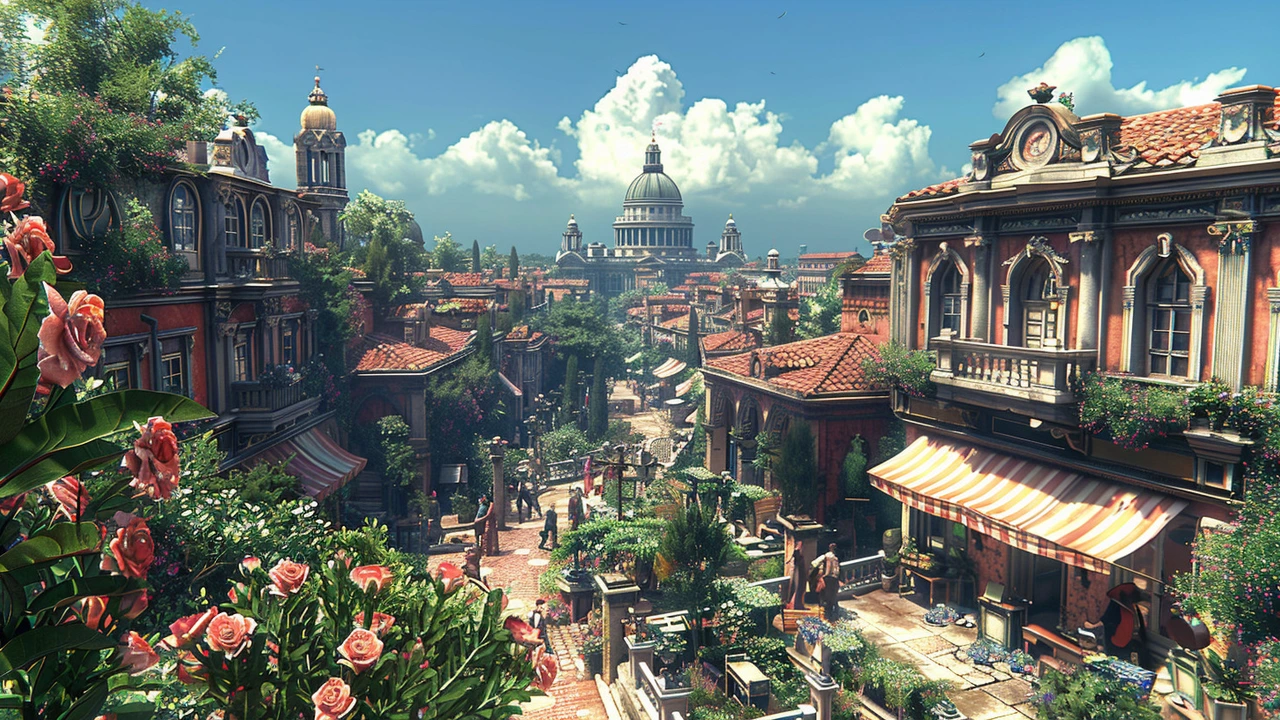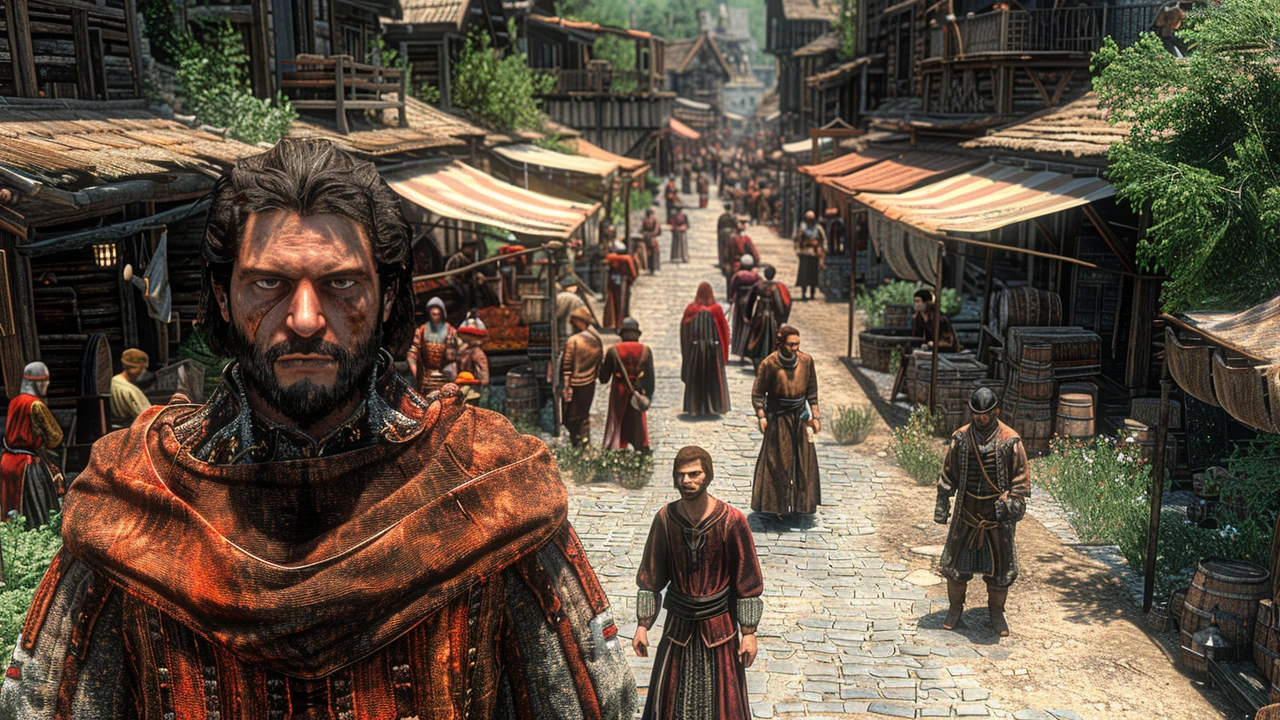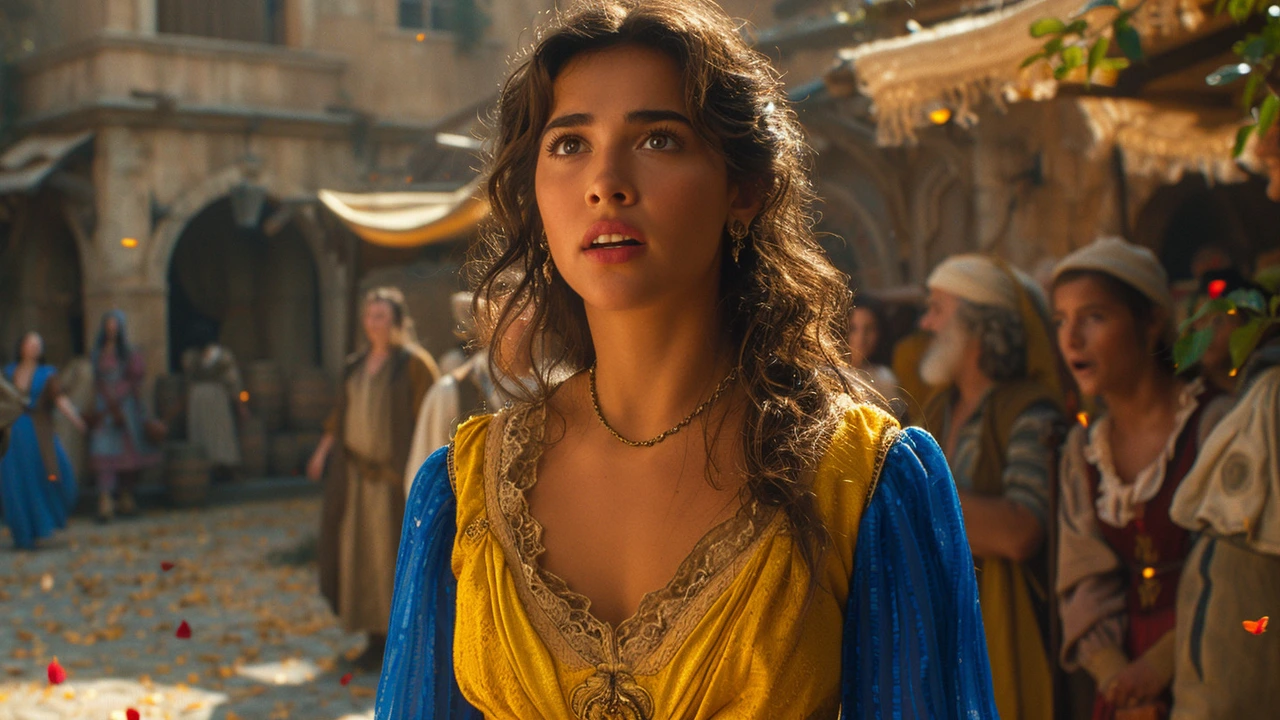The Renaissance: A New Era of Enlightenment and Cultural Elevation
 May, 28 2024
May, 28 2024
The Renaissance, spanning from the 14th to the 17th century, represents a profound cultural movement that began in Italy and later spread across Europe. Emerging after the Middle Ages, this period sparked a resurgence in art, literature, philosophy, and science.
Characterized by a renewed interest in classical antiquity, the Renaissance witnessed an explosion of creativity and innovation. Scholars and artists drew inspiration from ancient Greek and Roman texts, leading to groundbreaking developments and a human-centered worldview.
From the masterpieces of Leonardo da Vinci to the revolutionary heliocentric theories of Copernicus, the Renaissance was a time of great thinkers and extraordinary achievements that forever changed the trajectory of human history. Explore this captivating era and discover how it continues to influence our world today.
Origins and Context
The Renaissance emerged in the bustling city-states of Italy during the 14th century, a period that marked the end of the Medieval era and the dawn of modernity. It was a time when Europe saw a revival of interest in the art, culture, and knowledge of ancient Greece and Rome. Triggered by the rediscovery of classical texts preserved by Islamic scholars, the Renaissance was characterized by a renewed emphasis on humanism, a philosophy that placed humans at the center of the universe's focus.
Florence, often dubbed the cradle of the Renaissance, was especially influential. Its prosperity was fueled by a robust economy driven by trade, banking, and a thriving textile industry. The Medici family, key patrons of the arts, played a crucial role in Florence's cultural boom. Their patronage attracted artists, architects, and thinkers, thus creating a fertile ground for artistic and intellectual innovation.
One can trace the origins of this cultural rebirth to the traumatic period of the Black Death. The plague decimated Europe’s population but indirectly paved the way for the Renaissance. Labor shortages meant higher wages for workers and a redistribution of wealth. As people sought solace and answers in times of despair, they turned to classical antiquity for inspiration and guidance.
The invention of the printing press by Johannes Gutenberg around 1440 was another pivotal factor. This groundbreaking technology made the mass production of books possible, drastically reducing their cost and making knowledge more accessible. Many believe this democratization of knowledge ignited the intellectual fervor that defined the Renaissance era. William Shakespeare once wrote, "All the world's a stage," capturing the essence of this expansive human exploration.
Additionally, political stability in many parts of Europe allowed for economic growth, creating a society that could afford to emphasize culture. Italy, in particular, was organized into powerful city-states like Venice, Milan, and Rome, which were not only commercial hubs but also centers of art and learning. These cities competed with each other, fostering an environment ripe for cultural and intellectual advancements.
The fall of Constantinople in 1453 also played a part as Greek scholars fled to the West, bringing with them precious manuscripts and a wealth of knowledge. This infusion of new ideas further stoked the flames of Renaissance curiosity and innovation. It was truly a period of looking back to move forward, as Europe sought to recapture the glory of the ancient world while pushing the boundaries of contemporary thought and creativity.
The Catholic Church, despite being a dominant power, was also a source of patronage. However, this period also saw the seeds of the Reformation, as people began to question the established order. Humanism encouraged individuals to think critically and rely on empirical evidence, gradually shifting the societal focus from divine authority to human potential and experience.
Trade routes, transcending geographical confines, facilitated the free flow of ideas, goods, and cultural practices. Explorers like Marco Polo opened new frontiers, enabling an exchange that extended the Renaissance's influence far beyond European borders. The age saw not just a rediscovery within Europe but an intermingling of knowledge from various parts of the world.
Key Figures
During the Renaissance, a wealth of extraordinary individuals emerged, leaving an indelible mark on various domains. These key figures not only shaped the intellectual landscape of their time but also paved the way for future generations. One cannot discuss the Renaissance without mentioning the quintessential Renaissance man, Leonardo da Vinci. Known for his insatiable curiosity and diverse talents, da Vinci excelled in art, science, engineering, and anatomy. His works, like the Mona Lisa and The Last Supper, are masterpieces of artistic technique and profound expression.
Leonardo's contemporary, Michelangelo Buonarroti, was another towering figure of the era. His sculptures, such as David and Pietà, as well as his expansive frescoes on the ceiling of the Sistine Chapel, demonstrated an unparalleled mastery of the human form. Michelangelo's art was characterized by its intensity and emotional depth, reflecting both the beauty and agony of the human condition.
"A man paints with his brains and not with his hands." - Michelangelo
The intellectual realm of the Renaissance was equally enriched by polymaths like Galileo Galilei. Known as the father of modern observational astronomy, Galileo's telescopic discoveries, including the moons of Jupiter, revolutionized our understanding of the universe. His defiance of conventional wisdom and staunch support of the heliocentric theory, despite facing persecution, highlight the era's spirit of inquiry and boldness.
Another seminal figure was Niccolò Machiavelli, whose writings on political philosophy remain influential to this day. In his work, The Prince, Machiavelli explored the dynamics of power and statecraft with a realism that often shocked his contemporaries. His insights into human nature and governance continue to be relevant, offering a pragmatic lens through which to view political affairs.
In the north, Albrecht Dürer emerged as a key figure in bringing the Renaissance spirit to the Germanic world. As a painter, printmaker, and theorist, Dürer was known for his precise, detailed works and his contributions to the study of human proportions. His woodcuts, like the series on the Apocalypse, showed a blend of technical skill and vivid imagination that captured the tensions and hopes of his time.
Beyond individuals, groups like the Florentine Academy played crucial roles in fostering the exchange of ideas. Under the patronage of the powerful Medici family, this intellectual hub brought together thinkers, artists, and scientists, creating a fertile ground for the cross-pollination of ideas. The collective efforts of these remarkable individuals and communities gave birth to a period of unprecedented creativity and intellectual fervor.

Artistic Achievements
The Renaissance period is often remembered for its remarkable artistic achievements, which forever transformed the landscape of art. This era produced some of the world's most recognizable and celebrated works, crafted by master artists who pushed the boundaries of creativity and expression. Central to the Renaissance's artistic innovations was the technique of perspective, which brought a new depth and realism to paintings. Artists like Filippo Brunelleschi and Leon Battista Alberti played pivotal roles in developing linear perspective, a method that allowed for more accurate depictions of space and proportion.
Leonardo da Vinci, one of the most iconic figures of this period, exemplified the Renaissance ideal of the 'universal man.' His works such as 'The Last Supper' and 'Mona Lisa' are studies in human emotion and naturalism, capturing intricate details and expressions with unparalleled skill. Michelangelo Buonarroti, a contemporary of Leonardo, is equally renowned. His sculpture of 'David' is a masterpiece of human anatomy and beauty, and his frescoes on the ceiling of the Sistine Chapel remain a testament to human creativity and endurance. Michelangelo's work on the Sistine Chapel, particularly 'The Creation of Adam,' has been celebrated for its dynamic composition and powerful imagery.
Raphael Sanzio, another giant of Renaissance art, is best known for his 'School of Athens,' a fresco that epitomizes the spirit of the Renaissance. It showcases a gathering of great philosophers and scholars of antiquity, depicted with a harmonious blend of idealism and realism. Raphael’s ability to convey serenity and grace in his compositions earned him a reputation as one of the great masters of his time. Moreover, the period saw the exploration of new mediums and techniques. Fresco painting, oil painting, and sculpture in marble and bronze became popular mediums for artistic expression. Artists were not just creators; they were innovative thinkers who experimented with light, shadow, and human anatomy to bring their works to life.
"Art alone cannot flourish through the effort of many; it requires the laborious devotion of one single soul." — Giorgio Vasari
One cannot overlook the contributions of female artists during the Renaissance, though their works have often been overshadowed by their male counterparts. Artists such as Sofonisba Anguissola and Artemisia Gentileschi carved niches for themselves in a male-dominated field, producing works that are celebrated for their emotional depth and technical proficiency. Sofonisba Anguissola's portraiture and Artemisia Gentileschi's powerful narrative scenes, such as her depiction of 'Judith Slaying Holofernes,' highlight the significant yet often underappreciated contributions of women in Renaissance art.
The artistic achievements of the Renaissance were not confined to Italy alone; the movement spread across Europe, influencing artists in Germany, France, and the Netherlands. Albrecht Dürer from Germany, with his highly detailed engravings and woodcuts, brought the precision of Renaissance art to Northern Europe. His works like 'Knight, Death, and the Devil' and 'Melencolia I' are lauded for their intricate detail and symbolic meanings.
In the realm of architecture, the Renaissance saw the revival of classical forms combined with innovative design. The dome of Florence Cathedral, engineered by Brunelleschi, remains a marvel of engineering and aesthetics. Saint Peter’s Basilica in Rome, redesigned by architects including Michelangelo, symbolizes the grandeur of Renaissance architecture with its harmonious proportions and majestic dome.
The Renaissance was truly a golden age of artistic achievement. The art from this period not only displayed unparalleled technical skill but also embodied the intellectual and cultural dynamism of the era. The works created during this time continue to inspire and influence the world of art, serving as timeless testaments to the extraordinary capabilities of human creativity.
Scientific Advancements
The Renaissance period marked a revolution in scientific thought and methodology, laying the foundations for modern science. This era saw the emergence of a new approach to understanding the natural world, emphasizing observation, experimentation, and the questioning of longstanding beliefs. One of the most influential figures during this time was Nicolaus Copernicus. His heliocentric theory, which posited that the Earth revolves around the Sun, challenged the long-held geocentric model endorsed by the Church. Copernicus’ work, "On the Revolutions of the Celestial Spheres," published in 1543, is often regarded as the starting point of modern astronomy.
Another key figure was Galileo Galilei, who furthered Copernican theory through his telescopic observations. Galileo’s improvements to the telescope allowed him to make unprecedented discoveries, such as the moons of Jupiter and the phases of Venus. These observations provided compelling evidence for the heliocentric model and transformed our understanding of the universe. In 1632, Galileo published "Dialogue Concerning the Two Chief World Systems," which argued in favor of Copernican heliocentrism against the established geocentric views.
Beyond astronomy, the Renaissance also saw significant progress in anatomy and medicine. Andreas Vesalius' landmark work, "De humani corporis fabrica," published in 1543, was based on meticulous dissections and corrected many inaccuracies in the anatomical knowledge inherited from ancient sources. Vesalius' detailed illustrations and descriptions of the human body were revolutionary, setting new standards in medical research and education.
In the field of physics, Sir Isaac Newton’s contributions stand out. Although his monumental work, "Philosophiæ Naturalis Principia Mathematica," was published in 1687 after the traditional Renaissance period, it was fundamentally influenced by Renaissance scientific thought. Newton's laws of motion and universal gravitation provided a comprehensive framework that explained the motion of objects on Earth and in the heavens.
The development of the scientific method itself was a hallmark of the Renaissance. Figures like Francis Bacon and René Descartes emphasized the importance of empirical evidence and logical reasoning in the acquisition of knowledge. Bacon, often called the father of empiricism, advocated for a systematic approach to scientific inquiry based on observation and experimentation. Descartes, on the other hand, introduced analytical geometry and promoted rational doubt, which laid the groundwork for scientific skepticism.
These advancements were bolstered by the invention of the printing press by Johannes Gutenberg around 1440. The printing press facilitated the rapid dissemination of ideas, making knowledge more accessible than ever before. Scientific works could be reproduced and shared widely, accelerating the spread of new discoveries and fostering collaboration among scholars.
As a result of these scientific advancements, the Renaissance era cultivated an environment of curiosity and innovation. It encouraged individuals to question the status quo and seek understanding through observation and reason. The legacy of Renaissance science is evident today in the scientific methods and principles that continue to drive exploration and discovery in various fields. As Galileo famously said, "
All truths are easy to understand once they are discovered; the point is to discover them."

Enduring Impact
The Renaissance was not just a fleeting moment of brilliance; its effects are still felt in today's society. This transformative period fundamentally changed how we perceive art, science, education, and even our place in the world. One of its most significant impacts is the shift toward humanism, where the focus on individual experience and emotion became paramount. This idea, so revolutionary in its time, laid the foundation for modern Western thought.
Notably, the Renaissance period saw tremendous advancements in art and architecture. Techniques like perspective and chiaroscuro introduced depth and emotion, forever altering the visual landscape. Think of how modern art galleries are packed with works inspired by masters like Michelangelo and Raphael, whose influence extends far beyond their era. The Renaissance also saw the rise of the 'Renaissance man,' a term still used today to describe someone proficient in multiple fields, inspired by figures like Leonardo da Vinci.
Equally important were the scientific advancements. The spirit of inquiry and rigorous experimentation during the Renaissance laid the groundwork for the Scientific Revolution. Figures such as Galileo Galilei and Nicolaus Copernicus challenged conventional wisdom and pushed the boundaries of human knowledge. The heliocentric model proposed by Copernicus revolutionized our understanding of the universe, which was further substantiated by Galileo's telescopic observations. The methodologies developed during this period continue to inform modern scientific research.
The Renaissance also had a lasting impact on education and literature. The invention of the printing press by Johannes Gutenberg made books more accessible, allowing ideas to spread more rapidly. This democratized learning and laid the groundwork for the widespread literacy we often take for granted today. Authors like Shakespeare were deeply influenced by Renaissance humanism, which is evident in his complex characters and intricate plots. His works remain a staple in educational curricula worldwide.
Moreover, the political and economic innovations of the Renaissance fostered the growth of new governance systems. The rise of banking and finance, with institutions like the Medici Bank, introduced modern financial practices that still underpin our global economy. Additionally, the period saw the emergence of more secular governance, a shift from the predominantly religious rule of the Middle Ages, paving the way for the development of the modern state.
The Renaissance's influence permeates various aspects of our daily lives. Whether it's the emphasis on a well-rounded education, the pursuit of scientific knowledge, or the appreciation of artistic beauty, the echoes of this extraordinary period are all around us. To quote the historian Jacob Burckhardt,
"The essence of the Renaissance lay in the fervent conviction that man was at last discovering himself and his world."This discovery has continued to inspire generations, urging us to explore, create, and innovate.